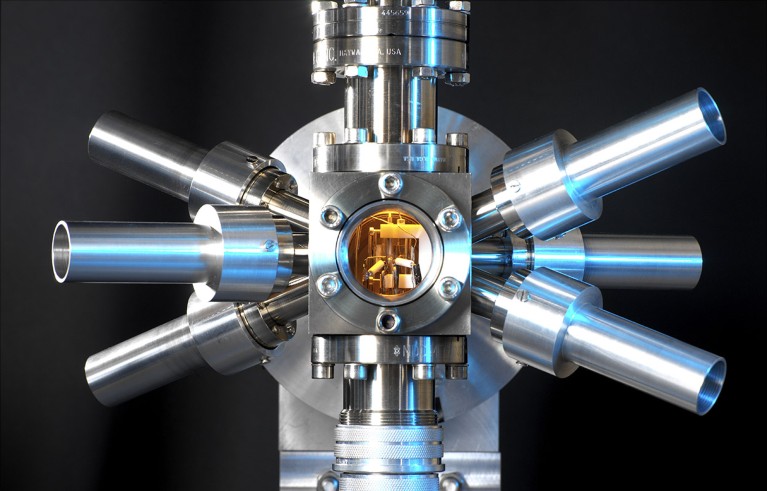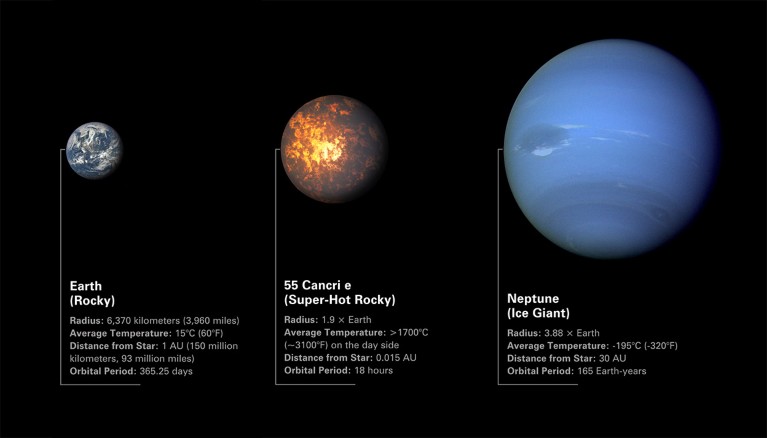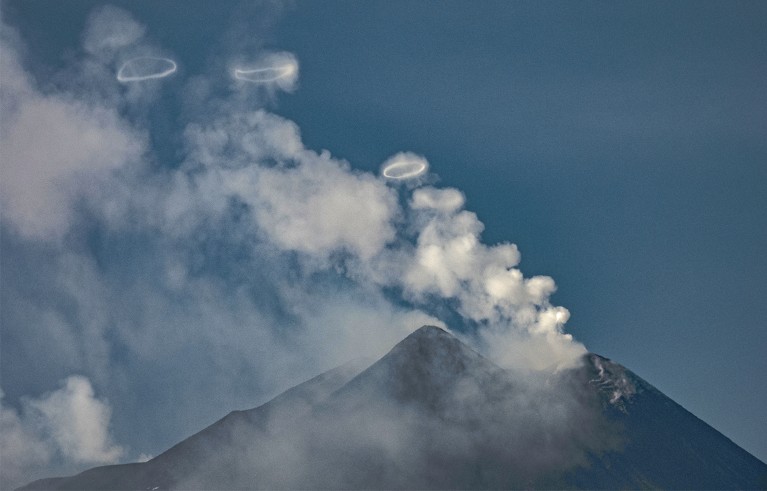Hello Nature readers, would you like to get this Briefing in your inbox free every day? Sign up here.

In principle, a nuclear clock should be more precise and more stable than an optical clock (pictured).Credit: Andrew Brookes, National Physical Laboratory/Science Photo Library
Ultra-precise ‘nuclear’ clock in sight
Researchers have used a laser to prompt tiny energy shifts in an atomic nucleus — a major step towards building nuclear clocks. These could be around 10 times more accurate than the world’s current best timekeepers, known as optical clocks, and less sensitive to disturbances. “We will be able to probe scenarios of dark matter and of fundamental physics that are currently inaccessible to other methods,” says theoretical physicist Elina Fuchs. To turn the system into an actual clock, physicists will need to build higher-resolution lasers that nudge the nucleus with more precision.
Reference: Physical Review Letters paper
Hot super-Earth has atmosphere
Investigations using the James Webb Space Telescope have confirmed that the exoplanet 55 Cancri e has a carbon-based atmosphere — the first time an atmosphere has been detected surrounding a rocky planet similar to Earth outside the Solar System. The planet orbits very close to its Sun-like star and can’t support life as we know it, in part because it is probably covered by a magma ocean. “Earth probably went through at least one magma-ocean stage, maybe several,” says planetary geologist Laura Schaefer. “Having actual present-day examples of magma oceans can help us understand the early history of our Solar System.”
Reference: Nature paper

55 Cancri e is a little bigger than Earth, but much smaller than the Solar System’s giant planets, such as Neptune.Credit: NASA, ESA, CSA, Dani Player (STScI)
Brazilian universities hit by strikes
Academic workers at some Brazilian institutions are entering their fourth week of strikes for better wages and more university funding. They say the country’s president has come up short in his promise to boost science and education funding, in part because of opposition from legislators. “We are not against the government,” says botanist Thiago André. “We are in negotiation with the government.” The strikes have halted classes on many campuses, although many scientists are continuing their research. It’s unclear when the strike will end.
Features & opinion
The scientist who fled Aleppo
“If you’re passionate about research, about science, I think my advice is to never give up,'' says Syrian biochemist Aref Kyyaly. He recalls being close to abandoning his work when, in 2013, he decided to flee war-torn Aleppo with his family. The Council for At-Risk Academics helped Kyyaly secure a visa and job in the United Kingdom. “It was like a door was opened for me.” Kyyaly has been granted permission to stay in the country and has secured a permanent job as a biomedical science lecturer, but his immigration status has hindered his career: “I have friends who started four or five years after me and now they’re way ahead of me.”
‘Nanopore’ sequencing: now for proteins
By squeezing a protein through a nanopore — a tiny opening created by another protein — researchers are starting to decipher the string of amino acid building blocks that proteins are made of. This nanopore sequencing is mostly used for DNA whose building blocks can be ‘read out’ as it passes through the nanopore, driven by an electrical current. Proteins can’t be moved consistently by a current, so researchers have found ways to push or pull them through a pore using water, enzymes or molecular motors. “All the pieces are there to start with to do single-molecule proteomics and identify proteins and their modifications using nanopores,” says chemical biologist Giovanni Maglia.
How to illuminate the ‘ugly’ side of science
Data repositories, workshops and alternative journals allow scientists to share and discuss negative results, which could help to solve the reproducibility crisis and give machine learning a boost. Publishing negative results is often seen as not worth the time and effort, yet “understanding the reasons for null results can really test and expand our theoretical understanding”, says psychologist Wendy Ross. And highlighting negative results can help students to see that “you are not a bad researcher because you fail”, adds computer scientist Ella Peltonen.
Image of the week

Credit: Fabrizio Villa/Getty
A newly formed crater of Italy’s Etna volcano puffs out perfect 'smoke rings'. These volcanic vortex rings form when cold air above the volcano causes hot gases travelling up the walls of a round vent to condense. Such displays are rare: the vent must have a circular shape and sides of the same height for such well-defined rings to form.
See more of the month’s sharpest science shots, selected by Nature’s photo team.
